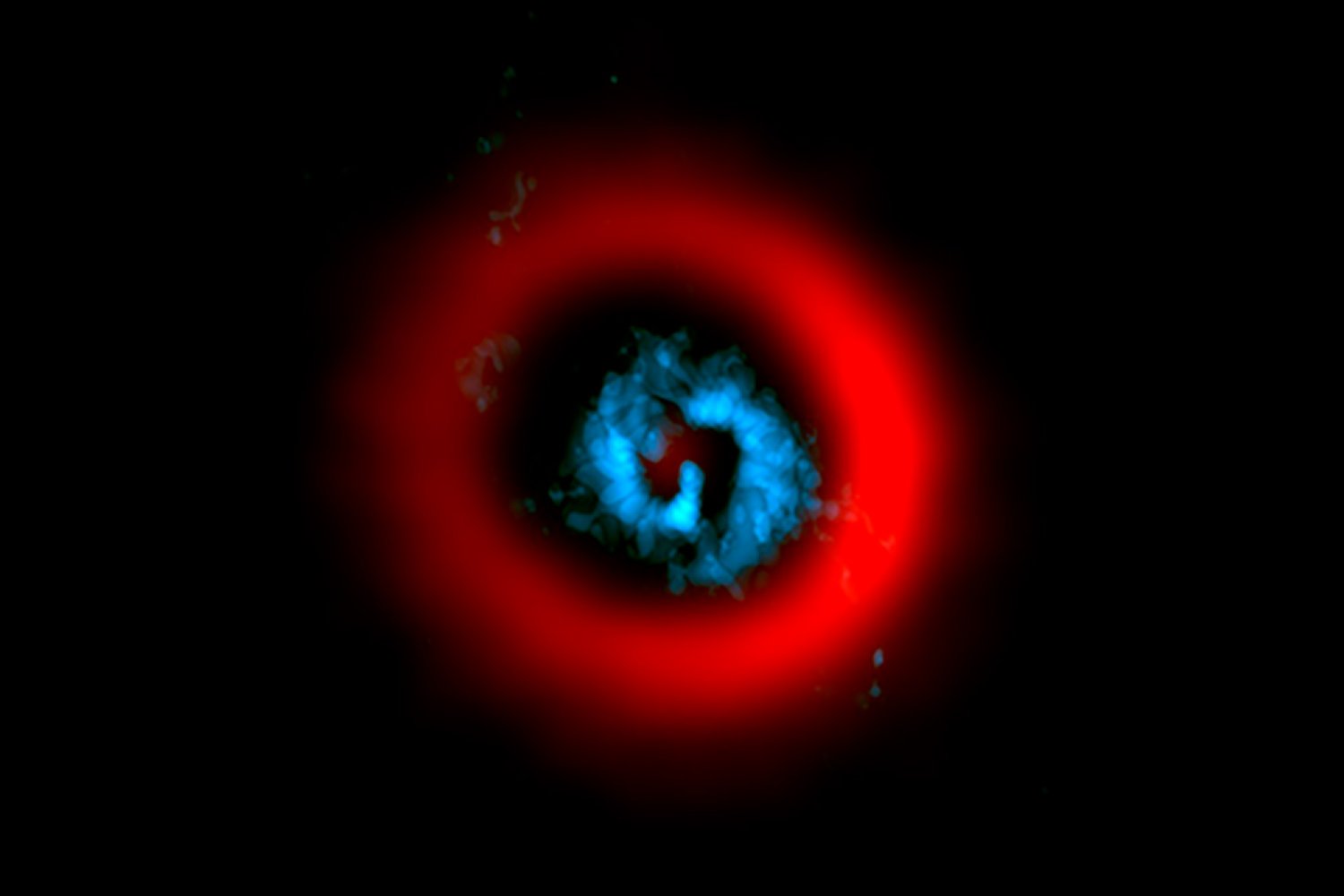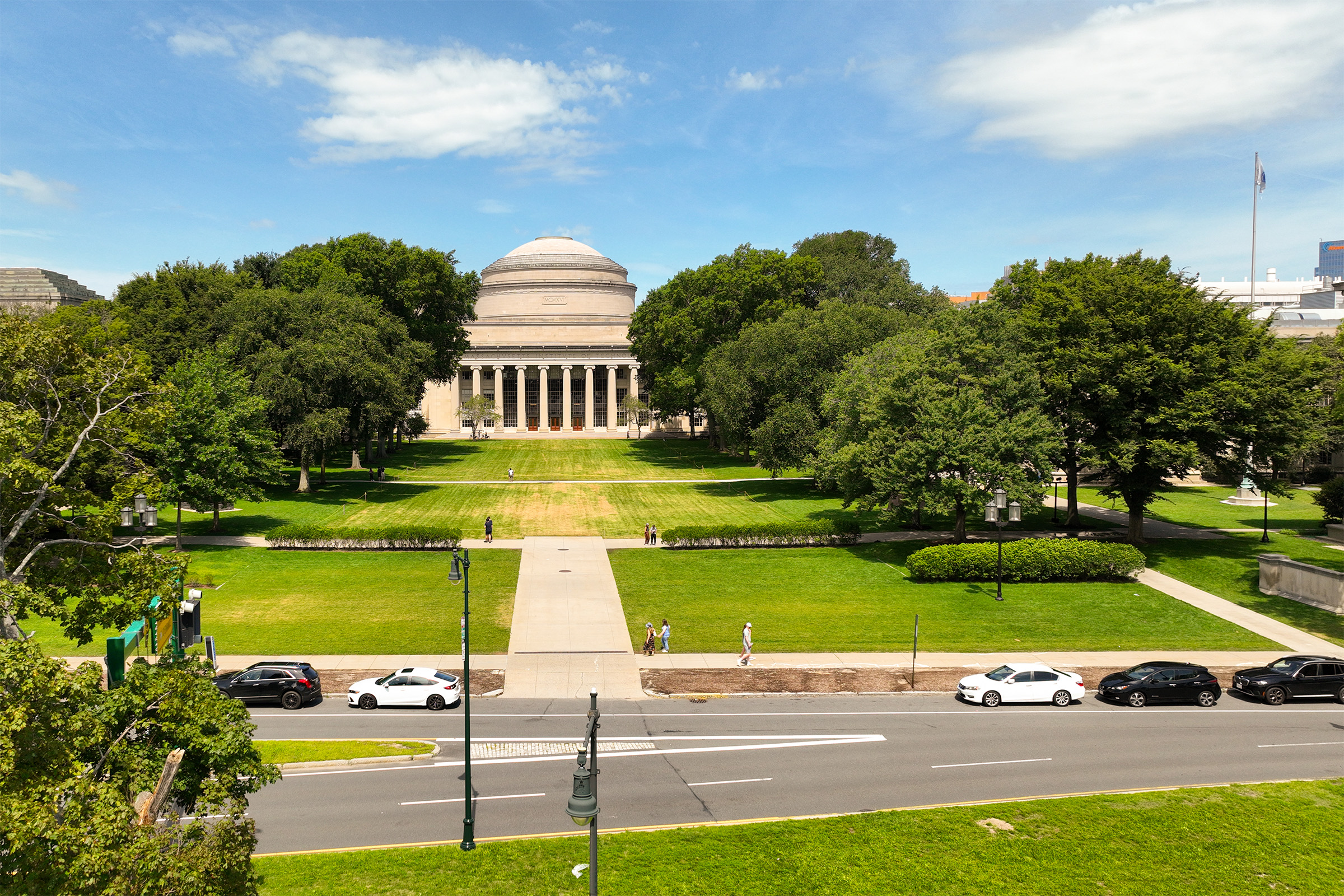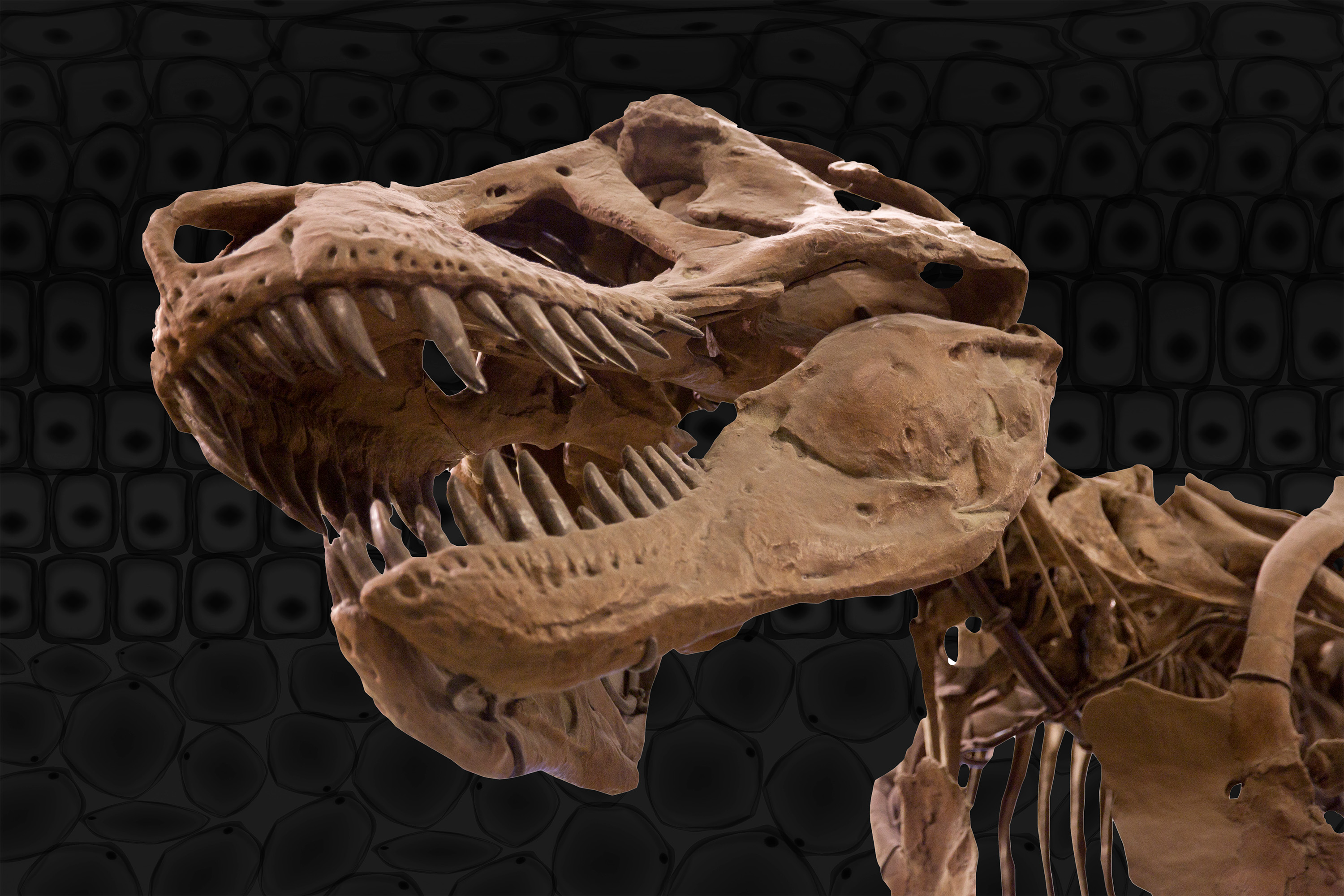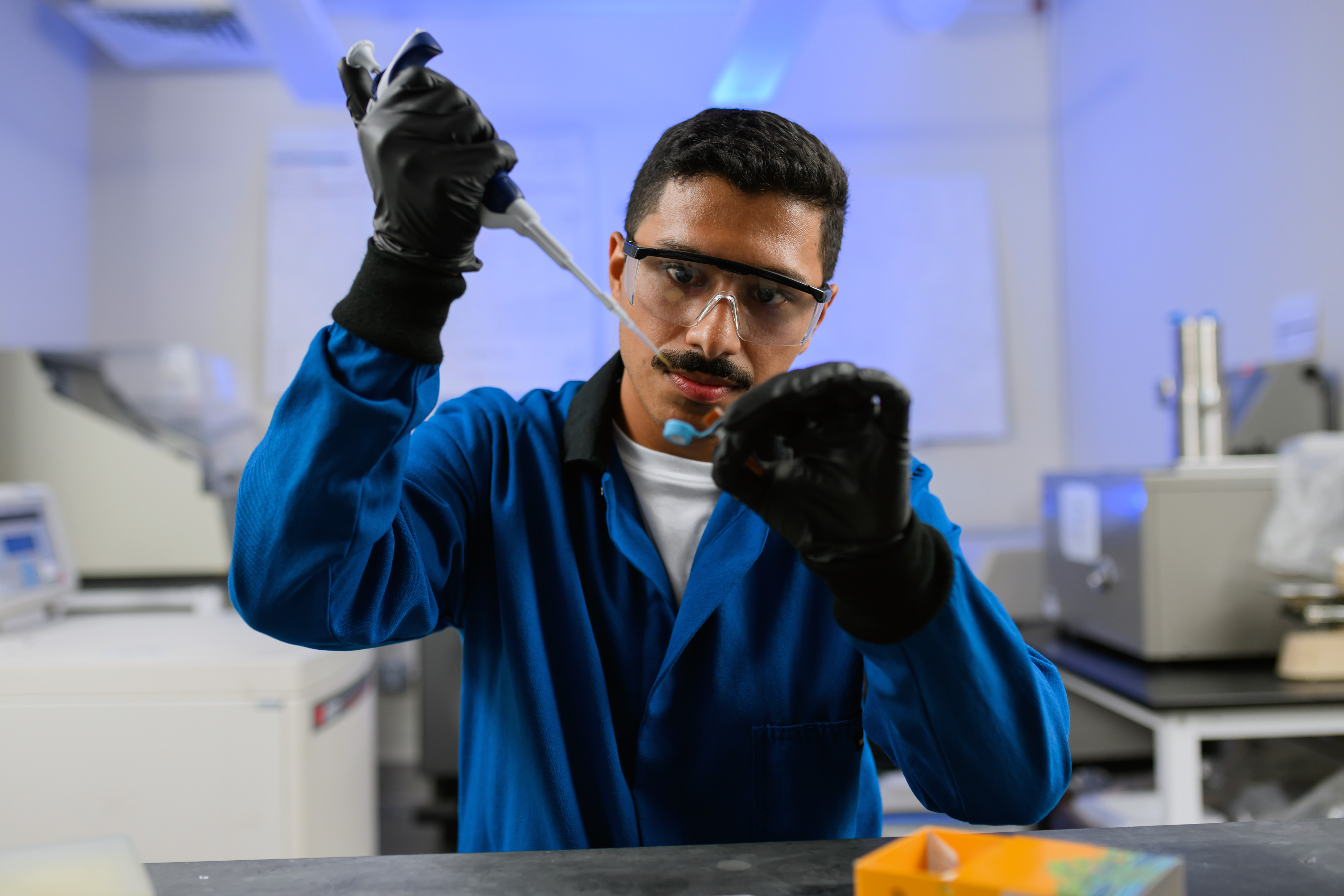NVIDIA has seen its share price plummet following a report of intensified scrutiny from US authorities over potential breaches of competition law. During the regular trading session on Tuesday, NVIDIA’s share price experienced a near-10% drop. The fall wiped £212 billion from its market value, marking…
3 Questions: Evidence for planetary formation through gravitational instability

Exoplanets form in protoplanetary disks, a collection of space dust and gas orbiting a star. The leading theory of planetary formation, called core accretion, occurs when grains of dust in the disk collect and grow to form a planetary core, like a snowball rolling downhill. Once it has a strong enough gravitational pull, other material collapses around it to form the atmosphere.
A secondary theory of planetary formation is gravitational collapse. In this scenario, the disk itself becomes gravitationally unstable and collapses to form the planet, like snow being plowed into a pile. This process requires the disk to be massive, and until recently there were no known viable candidates to observe; previous research had detected the snow pile, but not what made it.
But in a new paper published today in Nature, MIT Kerr-McGee Career Development Professor Richard Teague and his colleagues report evidence that the movement of the gas surrounding the star AB Aurigae behaves as one would expect in a gravitationally unstable disk, matching numerical predictions. Their finding is akin to detecting the snowplow that made the pile. This indicates that gravitational collapse is a viable method of planetary formation. Here, Teague, who studies the formation of planetary systems in MIT’s Department of Earth, Atmospheric and Planetary Sciences (EAPS), answers a few questions about the new work.
Q: What made the AB Aurigae system a good candidate for observation?
A: There have been plenty of observations that have suggested some interesting dynamics going on the system. Groups have seen spiral arms within the disk; people have found hot spots, which some groups have interpreted as a planet; others have explained as some other instability. But it was really a disk that we knew there was lots of interesting motions going on. The data that we had previously was enough to see that it was interesting, but not really good enough to detail what was going on.
Q: What is gravitational instability when it comes to protoplanetary disks?
A: Gravitational instabilities are where the gravity from the disk itself is strong enough to perturb motions within the disk. Usually, we assume that the gravitational potential is dominated by the central star, which is the case when the mass of the disk is less than 10 percent of the stellar mass (which is most of the time). When the disk mass gets too large, gravitational potential will affect it in different ways and drive these very large spiral arms in the disk. These can have lots of different effects: They can trap the gas, they can heat it up, they can allow for angular momentum to be transported very rapidly within the disk. If it’s unstable, the disk can fragment and collapse directly to form a planet in an incredibly short period of time. Rather than the tens of thousands of years that it would take for a core accretion to happen, this would happen at a fraction of that time.
Q: How does this discovery challenge conventional wisdom around planetary formation?
A: It shows that this alternative path of forming planets via direct collapse is a way that we can form planets. This is particularly important because we’re finding more and more evidence of very large planets — say, Jupiter mass or larger — that are sitting very far away from their star. Those sorts of planets are incredibly hard to form with core accretion, because you typically need them close to the star where things happen quickly. So to form something so massive, so far away from the star is a real challenge. If we’re able to show that there are sources that are massive enough that they’re gravitationally unstable, this solves that problem. It’s a way that perhaps newer systems can be formed, because they’ve always been a bit of a challenge to understand how they came about with core accretion.
Enabled by a significant gift, MIT’s Security Studies Program launches the Center for Nuclear Security Policy

MIT’s Security Studies Program has received a $45 million gift from The Stanton Foundation to expand its leading work on the vital issue of global nuclear security.
The support will allow the program to create a new center on the topic while extending and enhancing research, teaching, and policy outreach in an area where the Institute is a longstanding leader with wide-ranging faculty expertise.
“We are on the cusp of a new and more dangerous nuclear age, with the modernization and expansion of nuclear arsenals, the collapse of arms control agreements, continued proliferation challenges, and the impact of new and emerging technologies on how states will manage their arsenals,” says M. Taylor Fravel, director of the Security Studies Program. “This new center will help us address these new challenges.”
Moreover, Fravel adds, “This has been an area of expertise within MIT and the Security Studies Program for almost five decades. We are enormously appreciative of The Stanton Foundation’s confidence in us to carry this vital work forward.” The Security Studies Program is also part of MIT’s Center for International Studies.
“The Stanton Foundation’s extraordinary gift capitalizes on MIT’s deep, longstanding strength in nuclear policy research,” says MIT President Sally A. Kornbluth. “With this new investment, MIT can lead the way in advancing evidence-based nuclear policy in the best interest of our nation and the world.”
The Stanton Foundation funding will enable the center to create three fellowships for junior scholars in nuclear security, hire new senior researchers, organize workshops and conferences, host international fellows, provide support for MIT faculty research, and seed other new projects.
“First, it will help advance policy-relevant research on all key challenges related to nuclear security that bear on this new and potentially more dangerous nuclear era,” says Fravel, who is also the Arthur and Ruth Sloan Professor in MIT’s Department of Political Science. “Second, it will help the next generation of thought leaders pursue their own research to help mitigate these problems. So, while there is a huge set of challenges, with the center we will have new resources to address them.”
Vipin Narang, the Frank Stanton Professor of Nuclear Security and Political Science at MIT, will serve as the center’s first director. Narang recently returned to MIT after a two-and-a-half-year public service leave at the U.S. Department of Defense, where his last position was acting assistant secretary of defense for space policy, a role that included oversight of missile defense, countering weapons of mass destruction, and nuclear deterrence policy, among other topics.
“I am thrilled to return to MIT and help launch this historic center, which will hopefully become a central pillar in the world’s study and practice of nuclear security, at this crucial time in the resurgence of nuclear threats,” Narang says.
The Stanton Foundation was established by Frank Stanton, president of the broadcaster CBS from 1946 to 1971. Stanton’s involvement with nuclear issues began with his appointment to a committee convened by President Dwight Eisenhower in 1954 to develop the first comprehensive plan for the survival of the U.S. following a nuclear attack. Stanton had lead responsibility for developing a plan for national and international communication in the aftermath of a nuclear incident. The foundation has focused most of its philanthropy on nuclear security and on sustaining free speech rights while bolstering the spread of accurate civic information. It also supports work on canine health and welfare.
The Security Studies Program has roots extending to 1976, when it was first established as the Defense and Arms Control Study Program, before changing its name in the early 1990s.
“It’s always been an area where we’ve maintained excellence, especially with respect to the very core questions of how to bring about deterrence and stability, and how to counter the challenge of proliferation,” Fravel says.
Fravel emphasizes that the new center will draw on expertise from across the Institute. MIT has an array of nuclear weapons experts across its departments, labs, and centers, including SSP, the Department of Political Science, the Center for International Studies, and the Department of Nuclear Science and Engineering. Over the years, explains Fravel, a special feature of the program has been the integration of technical and political analysis of national and international security problems.
“We look forward to leveraging all the expertise at MIT to help mitigate future nuclear risks,” Fravel says.
MIT chemists explain why dinosaur collagen may have survived for millions of years

Collagen, a protein found in bones and connective tissue, has been found in dinosaur fossils as old as 195 million years. That far exceeds the normal half-life of the peptide bonds that hold proteins together, which is about 500 years.
A new study from MIT offers an explanation for how collagen can survive for so much longer than expected. The research team found that a special atomic-level interaction defends collagen from attack by water molecules. This barricade prevents water from breaking the peptide bonds through a process called hydrolysis.
“We provide evidence that that interaction prevents water from attacking the peptide bonds and cleaving them. That just flies in the face of what happens with a normal peptide bond, which has a half-life of only 500 years,” says Ron Raines, the Firmenich Professor of Chemistry at MIT.
Raines is the senior author of the new study, which appears today in ACS Central Science. MIT postdoc Jinyi Yang PhD ’24 is the lead author of the paper. MIT postdoc Volga Kojasoy and graduate student Gerard Porter are also authors of the study.
Water-resistant
Collagen is the most abundant protein in animals, and it is found in not only bones but also skin, muscles, and ligaments. It’s made from long strands of protein that intertwine to form a tough triple helix.
“Collagen is the scaffold that holds us together,” Raines says. “What makes the collagen protein so stable, and such a good choice for this scaffold, is that unlike most proteins, it’s fibrous.”
In the past decade, paleobiologists have found evidence of collagen preserved in dinosaur fossils, including an 80-million-year-old Tyrannosaurus rex fossil, and a sauropodomorph fossil that is nearly 200 million years old.
Over the past 25 years, Raines’ lab has been studying collagen and how its structure enables its function. In the new study, they revealed why the peptide bonds that hold collagen together are so resistant to being broken down by water.
Peptide bonds are formed between a carbon atom from one amino acid and a nitrogen atom of the adjacent amino acid. The carbon atom also forms a double bond with an oxygen atom, forming a molecular structure called a carbonyl group. This carbonyl oxygen has a pair of electrons that don’t form bonds with any other atoms. Those electrons, the researchers found, can be shared with the carbonyl group of a neighboring peptide bond.
Because this pair of electrons is being inserted into those peptide bonds, water molecules can’t also get into the structure to disrupt the bond.
To demonstrate this, Raines and his colleagues created two interconverting mimics of collagen — the one that usually forms a triple helix, which is known as trans, and another in which the angles of the peptide bonds are rotated into a different form, known as cis. They found that the trans form of collagen did not allow water to attack and hydrolyze the bond. In the cis form, water got in and the bonds were broken.
“A peptide bond is either cis or trans, and we can change the cis to trans ratio. By doing that, we can mimic the natural state of collagen or create an unprotected peptide bond. And we saw that when it was unprotected, it was not long for the world,” Raines says.
“This work builds on a long-term effort in the Raines Group to classify the role of a long-overlooked fundamental interaction in protein structure,” says Paramjit Arora, a professor of chemistry at New York University, who was not involved in the research. “The paper directly addresses the remarkable finding of intact collagen in the ribs of a 195-million-old dinosaur fossil, and shows that overlap of filled and empty orbitals controls the conformational and hydrolytic stability of collagen.”
“No weak link”
This sharing of electrons has also been seen in protein structures known as alpha helices, which are found in many proteins. These helices may also be protected from water, but the helices are always connected by protein sequences that are more exposed, which are still susceptible to hydrolysis.
“Collagen is all triple helices, from one end to the other,” Raines says. “There’s no weak link, and that’s why I think it has survived.”
Previously, some scientists have suggested other explanations for why collagen might be preserved for millions of years, including the possibility that the bones were so dehydrated that no water could reach the peptide bonds.
“I can’t discount the contributions from other factors, but 200 million years is a long time, and I think you need something at the molecular level, at the atomic level in order to explain it,” Raines says.
The research was funded by the National Institutes of Health and the National Science Foundation.
Study: EV charging stations boost spending at nearby businesses

Charging stations for electric vehicles are essential for cleaning up the transportation sector. A new study by MIT researchers suggests they’re good for business, too.
The study found that, in California, opening a charging station boosted annual spending at each nearby business by an average of about $1,500 in 2019 and about $400 between January 2021 and June 2023. The spending bump amounts to thousands of extra dollars annually for nearby businesses, with the increase particularly pronounced for businesses in underresourced areas.
The study’s authors hope the research paints a more holistic picture of the benefits of EV charging stations, beyond environmental factors.
“These increases are equal to a significant chunk of the cost of installing an EV charger, and I hope this study sheds light on these economic benefits,” says lead author Yunhan Zheng MCP ’21, SM ’21, PhD ’24, a postdoc at the Singapore-MIT Alliance for Research and Technology (SMART). “The findings could also diversify the income stream for charger providers and site hosts, and lead to more informed business models for EV charging stations.”
Zheng’s co-authors on the paper, which was published today in Nature Communications, are David Keith, a senior lecturer at the MIT Sloan School of Management; Jinhua Zhao, an MIT professor of cities and transportation; and alumni Shenhao Wang MCP ’17, SM ’17, PhD ’20 and Mi Diao MCP ’06, PhD ’10.
Understanding the EV effect
Increasing the number of electric vehicle charging stations is seen as a key prerequisite for the transition to a cleaner, electrified transportation sector. As such, the 2021 U.S. Infrastructure Investment and Jobs Act committed $7.5 billion to build a national network of public electric vehicle chargers across the U.S.
But a large amount of private investment will also be needed to make charging stations ubiquitous.
“The U.S. is investing a lot in EV chargers and really encouraging EV adoption, but many EV charging providers can’t make enough money at this stage, and getting to profitability is a major challenge,” Zheng says.
EV advocates have long argued that the presence of charging stations brings economic benefits to surrounding communities, but Zheng says previous studies on their impact relied on surveys or were small-scale. Her team of collaborators wanted to make advocates’ claims more empirical.
For their study, the researchers collected data from over 4,000 charging stations in California and 140,000 businesses, relying on anonymized credit and debit card transactions to measure changes in consumer spending. The researchers used data from 2019 through June of 2023, skipping the year 2020 to minimize the impact of the pandemic.
To judge whether charging stations caused customer spending increases, the researchers compared data from businesses within 500 meters of new charging stations before and after their installation. They also analyzed transactions from similar businesses in the same time frame that weren’t near charging stations.
Supercharging nearby businesses
The researchers found that installing a charging station boosted annual spending at nearby establishments by an average of 1.4 percent in 2019 and 0.8 percent from January 2021 to June 2023.
While that might sound like a small amount per business, it amounts to thousands of dollars in overall consumer spending increases. Specifically, those percentages translate to almost $23,000 in cumulative spending increases in 2019 and about $3,400 per year from 2021 through June 2023.
Zheng says the decline in spending increases over the two time periods might be due to a saturation of EV chargers, leading to lower utilization, as well as an overall decrease in spending per business after the Covid-19 pandemic and a reduced number of businesses served by each EV charging station in the second period. Despite this decline, the annual impact of a charging station on all its surrounding businesses would still cover approximately 11.2 percent of the average infrastructure and installation cost of a standard charging station.
Through both time frames, the spending increases were highest for businesses within about a football field’s distance from the new stations. They were also significant for businesses in disadvantaged and low-income areas, as designated by California and the Justice40 Initiative.
“The positive impacts of EV charging stations on businesses are not constrained solely to some high-income neighborhoods,” Wang says. “It highlights the importance for policymakers to develop EV charging stations in marginalized areas, because they not only foster a cleaner environment, but also serve as a catalyst for enhancing economic vitality.”
Zheng believes the findings hold a lesson for charging station developers seeking to improve the profitability of their projects.
“The joint gas station and convenience store business model could also be adopted to EV charging stations,” Zheng says. “Traditionally, many gas stations are affiliated with retail store chains, which enables owners to both sell fuel and attract customers to diversify their revenue stream. EV charging providers could consider a similar approach to internalize the positive impact of EV charging stations.”
Zheng also says the findings could support the creation of new funding models for charging stations, such as multiple businesses sharing the costs of construction so they can all benefit from the added spending.
Those changes could accelerate the creation of charging networks, but Zheng cautions that further research is needed to understand how much the study’s findings can be extrapolated to other areas. She encourages other researchers to study the economic effects of charging stations and hopes future research includes states beyond California and even other countries.
“A huge number of studies have focused on retail sales effects from traditional transportation infrastructure, such as rail and subway stations, bus stops, and street configurations,” Zhao says. “This research provides evidence for an important, emerging piece of transportation infrastructure and shows a consistently positive effect on local businesses, paving the way for future research in this area.”
The research was supported, in part, by the Singapore-MIT Alliance for Research and Technology (SMART) and the Singapore National Research Foundation. Diao was partially supported by the Natural Science Foundation of Shanghai and the Fundamental Research Funds for the Central Universities of China.
Spamouflage’s advanced deceptive behavior reinforces need for strong email security

EXECUTIVE SUMMARY:
Ahead of the U.S. elections, adversaries are weaponizing social media to gain political sway. Russian and Iranian efforts have become increasingly aggressive and transparent. However, China appears to have taken a more carefully calculated and nuanced approach.
China’s seeming disinformation efforts have little to do with positioning one political candidate as preferable to another. Rather, the country’s maneuvers may aim to undermine trust in voting systems, elections and America, in general; amplifying criticism and sowing discord.
Spamouflage
In recent months, the Chinese disinformation network, known as Spamouflage, has pursued “advanced deceptive behavior.” It has quietly launched thousands of accounts across more than 50 domains, and used them to target people across the United States.
The group has been active since 2017, but has recently reinforced its efforts.
Fake profiles
The Spamouflage network’s fake online accounts present fake identities, which sometimes change on a whim. The accounts/profiles have been spotted on X, TikTok and elsewhere.
| For example: Harlan claimed to be a New York resident and an Army veteran, age 29. His profile picture showed a well-groomed young man. However, a few months later, his account shifted personas. Suddenly, Harlan appeared to be from Florida and a 31 year-old Republican influencer. At least four different accounts were found to mimic Trump supporters – part of a tactic with the moniker “MAGAflage.” |
The fake profiles, including the fake photos, may have been generated through artificial intelligence tools, according to analysts.
Accounts have exhibited certain patterns, using hashtags like #American, while presenting themselves as voters or groups that “love America” but feel alienated by political issues that range from women’s healthcare to Ukraine.
In June, one post on X read “Although I am American, I am extremely opposed to NATO and the behavior of the U.S. government in war. I think soldiers should protect their own country’s people and territory…should not initiate wars on their own…” The text was accompanied by an image showing NATO’s expansion across Europe.
Email security implications
Disinformation campaigns that create (and weaponize) fake profiles, as described above, will have a high degree of success when crafting and distributing phishing emails, as the emails will appear to come from credible sources.
This makes it essential for organizations to implement and for employees to adhere to advanced verification methods that can ensure the veracity of communications.
Advanced email security protocols
Within your organization, if you haven’t done so already, consider implementing the following:
- Multi-factor authentication. Even if credentials are compromised via phishing, MFA can help protect against unauthorized account access.
- Email authentication protocols. Technologies such as SPF, DKIM and DMARC can assist with verifying the legitimacy of email senders and spoofing prevention.
- Advanced threat detection. Advanced threat detection solutions that are powered by AI and machine learning can enhance email traffic security.
- Employee awareness. Remind employees to not only think before they click, but to also think before they link to information – whether in their professional roles or their personal lives.
- Incident response plans. Most organizations have incident response plans. But are they routinely updated? Can they address disinformation and deepfake threats?
Further thoughts
To effectively counter threats, organizations need to pursue a dynamic, multi-dimensional approach. But it’s tough.
To get expert guidance, please visit our website or contact our experts. We’re here to help!
Engineering proteins to treat cancer

Like many children of first-generation immigrants, Oscar Molina grew up feeling like he had two career choices: doctor or lawyer. He seemed destined for the former as he excelled in high school and planned to major in biochemistry at the University of California at Los Angeles, but as an undergraduate, he fell in love with research.
“I was fascinated by discovery. As I did it more in college, I realized I didn’t want to be a doctor,” he says. “Once I saw that I could make an impact and be at the forefront of therapy with biotech, I knew I wanted to do that.”
If the next couple of years go as planned, his parents will indeed see their son become a doctor — just not exactly the way they might have guessed. He’s entering the fifth year of his PhD program in biology at MIT and is currently working in the lab of Professor Ronald Raines, researching the potential of proteins to kill cancer cells.
Molina, who is the first in his family to attend college, also works to support his fellow students through outreach and community-building efforts. In various roles, including as a Graduate Community Fellow in MIT’s Office of Graduate Education, he sought to connect and encourage students from underrepresented backgrounds as they pursued their own graduate studies.
“I had a lot of opportunities presented to me that made me ask, ‘Why me?’” he says. “I recognize that they were super valuable, and that’s why I should deliver that back to other people.”
Unlocking protein construction chemically
The spirit of giving back isn’t just limited to Molina’s work outside of the lab. He chose chemical biology and the pursuit of new cancer therapies as his research focus partly because his grandfather has been dealing with the disease for the last 10 years. The ultimate goal guiding his research is to make all protein-based cancer therapies more effective.
He and other collaborators in the Raines Lab published a paper in June that takes an important step in that direction, suggesting a way to make fusion proteins with greater customization and improved performance. They discovered that a chemical called 3-bromo-5-methylene pyrrolone can be used to combine three proteins efficiently and with high levels of control and modularity, a significant advance given most of the techniques for protein conjugation are only able to combine two at a time in a single spot.
“Now, we can have chemical control of where we include different things, where we can kind of plug-and-play,” he says.
Researchers can now adjust multiple characteristics at the same time — for example, increasing the protein’s half-life or improving its ability to target cancer cells — while still achieving a homogenous end product. They’re also relevant to immune cell redirection therapies, which require multimeric protein chimeras to activate immune clearance of cancer cells.
“That’s the most interesting thing to me,” he says. “How do we give a biologic therapy the best opportunity to be active and efficacious?”
His upcoming thesis will center around that question as it relates to chemotherapies based on ribonuclease 1, an enzyme that is best-known for cleaving RNA.
Paying it back and paying it forward
While that thesis will likely demand more of Molina than any other project he’s worked on in the past, he’s no stranger to hard work. After his mother and father left their respective homes of Guatemala and El Salvador in the 1990s, they dedicated their lives to giving their children futures that they themselves didn’t have access to.
Witnessing their efforts impressed two beliefs into Molina’s worldview: the value of education and the importance of support. Among his family, he is the first to graduate from a U.S. high school, the first to attend a four-year college, and the first to attend graduate school. These “firsts” can weigh heavily, and as he began his studies at MIT, he knew how difficult it can be to carry that burden alone.
“I saw the need and wanted to help other people be the first in their family to do things like go to college,” he says. “I also wanted to help people with similar backgrounds to mine, like being an underrepresented minority or a first-generation college student.”
That desire led Molina to join MIT’s Office of Graduate Education as a Graduate Community Fellow in January 2022, where he worked on supporting various affinity groups across the Institute. This included helping groups out with logistics, funding applications, community outreach and cross-group collaborations. He also spent part of last summer as a pod leader for the MIT Summer Research Program, which works to prepare underrepresented students for graduate education and research.
He’s also leveraged his personal interests to volunteer with various community organizations in Cambridge and Boston. Despite his numerous commitments, he’s an avid marathon runner, and ran the 2022 Boston Marathon while raising nearly $8000 for Boston Scores, a program that provides educational and athletic opportunities for students in the Boston Public Schools system.
After graduation, Molina plans on joining a startup in Boston’s biotech scene while learning more about the venture capital firms that fund their research. Wherever he ends up, he plans on continuing to apply the core truths that brought him where he is now.
“I want to be at the forefront of creating therapies. I really like science. I really like helping others. I really like the ability to create things that are impactful,” he says. “Now it’s time to take that and find my way to what’s next.”
Master CUDA: For Machine Learning Engineers
Computational power has become a critical factor in pushing the boundaries of what’s possible in machine learning. As models grow more complex and datasets expand exponentially, traditional CPU-based computing often falls short of meeting the demands of modern machine learning tasks. This is where CUDA (Compute…
AI in Healthcare Should Think Small
Six minutes into Apollo 13’s mission to the moon In 1970, its oxygen tank exploded. The event prompted NASA to develop a new approach to predicting possible failures in its spacecraft. The approach relied on continuous sensor data, which then fed deep digital simulations, enabling much…
Tigran Sloyan, Co-Founder & CEO of CodeSignal – Interview Series
Tigran Sloyan is the Co-Founder & CEO of CodeSignal and responsible for driving the company’s overall strategic direction and results. After graduating from MIT, he co-founded CodeSignal in 2015 to help teams and individuals discover and develop the skills that will shape the future. CodeSignal is…
